How to protect plants from frost – 12 quick solutions to keep plants alive through winter
Tender, tropical, and young plants need to be protected from frost and snow during the coldest months of the year

Tenielle Jordison

The incoming sudden cold snaps of winter can wipe out tender and young plants in an instant. That's why it's best to be prepared and know how to protect plants from frost ahead of the coldest time of year.
There are many quick ways you can protect more vulnerable plants and it's definitely better to be safe than sorry – there is nothing more devastating than seeing the beautiful plants you have lovingly nurtured destroyed seemingly overnight by a visit from Jack Frost.
Unless you live in a warm US hardiness zone or grow some of the best frost hardy perennials, it's likely some of your ornamental plants and crops will be in need of some protection, so read on to find out how you can help their survival through the colder months.
What plants will need protecting?
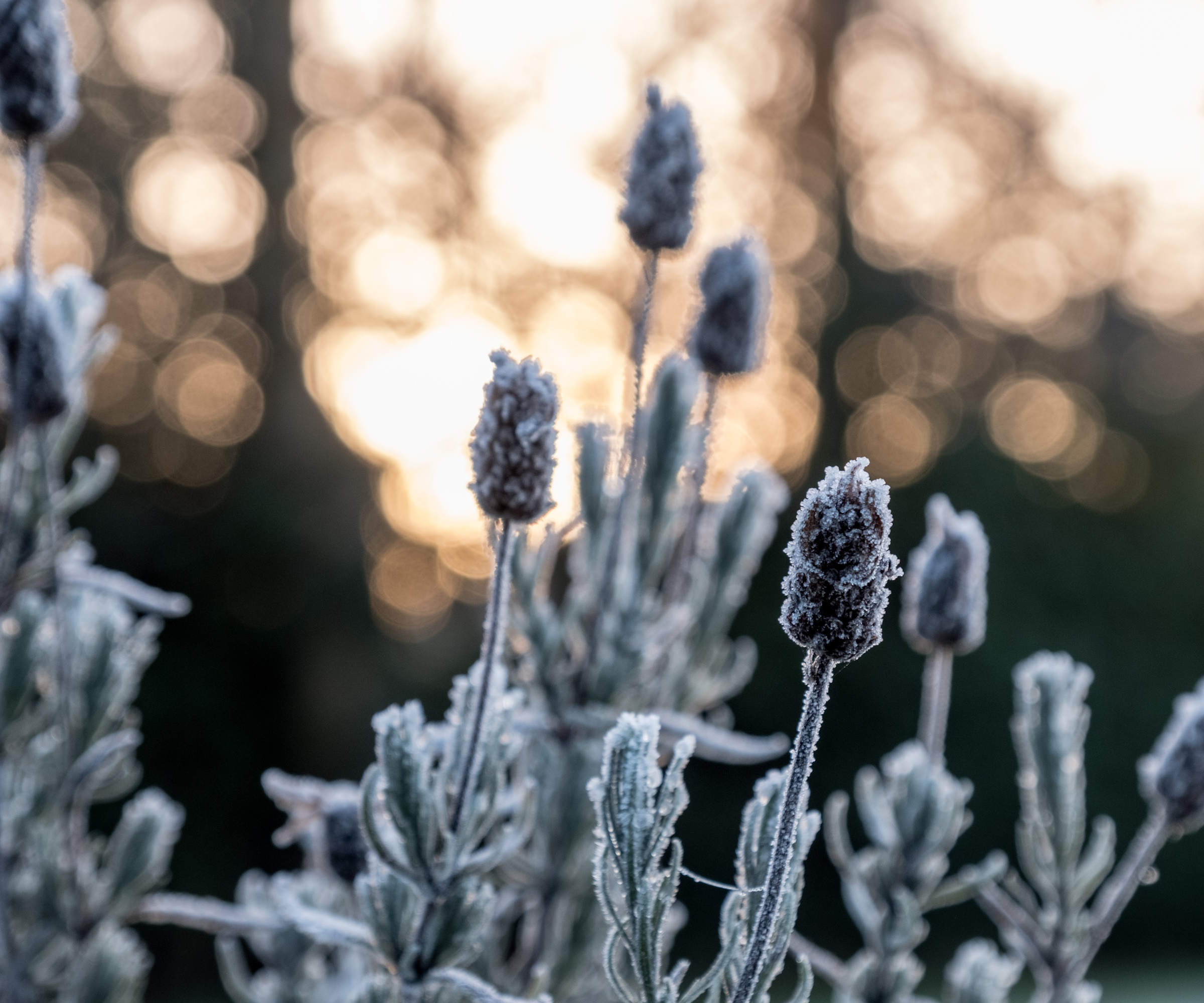
Not all plants in your backyard will need protection from the frost, but there are certain categories that will. These include:
- Young seedlings and new growth
- Tender perennials
- Half-hardy varieties
- Tropical and subtropical plants such as palms and banana plants
Signs of frost damage include blackened, distorted or limp growth and the leaves turning green on evergreen plants and shrubs.
If in any doubt, research the conditions and hardiness of specific plants. Err on the side of caution and include frost protection in your winter garden ideas if cold weather is forecast in your state or area.
In terms of vegetable garden crops, there are some that actually benefit from a dose of frost and can taste better afterwards. 'There are some veg crops that are frost tolerant, if not frost resistant,' explains Nicole Burke, author of Rooted Garden.
Design expertise in your inbox – from inspiring decorating ideas and beautiful celebrity homes to practical gardening advice and shopping round-ups.
If you live in a colder zone, it is therefore worth learning how to grow kale and other frost tolerant vegetable crops. Otherwise, you'll need to winterize your vegetable garden.
12 ways to protect plants from frost
Whether you are growing plants in the ground, flower beds raised beds, or as part of container gardens, there are ways to protect them from harsh frosts. Here, we look at 10 quick and simple methods to safeguard your plants this winter.
1. Bring potted plants indoors

There are many quick ways for how to protect plants from frost, and among the easiest is to overwinter plants indoors, especially tender container plants.
Potted plants are more susceptible to frost damage because they don't have the insulated benefits of of those planted in the ground.
'Potted plants, by their nature, are mobile. If frost is imminent, just bring them indoors or under shelter. In colder climates, it’s a must,' says Valeria Nyman, gardening expert from gardening app Taim.io.
Use a conservatory, garden room, garage, porch or frost-free greenhouse to overwinter potted plants – not somewhere that is too warm.
This can be a suitable option if you're wondering how to overwinter fuchsias in pots, or how to winterize hydrangeas, for example.

Valeria is the Chief Product Officer at Taim.io, an innovative platform that serves as a personal, adaptive gardening coach, offering tailored weekly advice to users. Valeria is a lifelong gardener and offers advice on a range of gardening matters.
2. Add a layer of mulch on garden beds
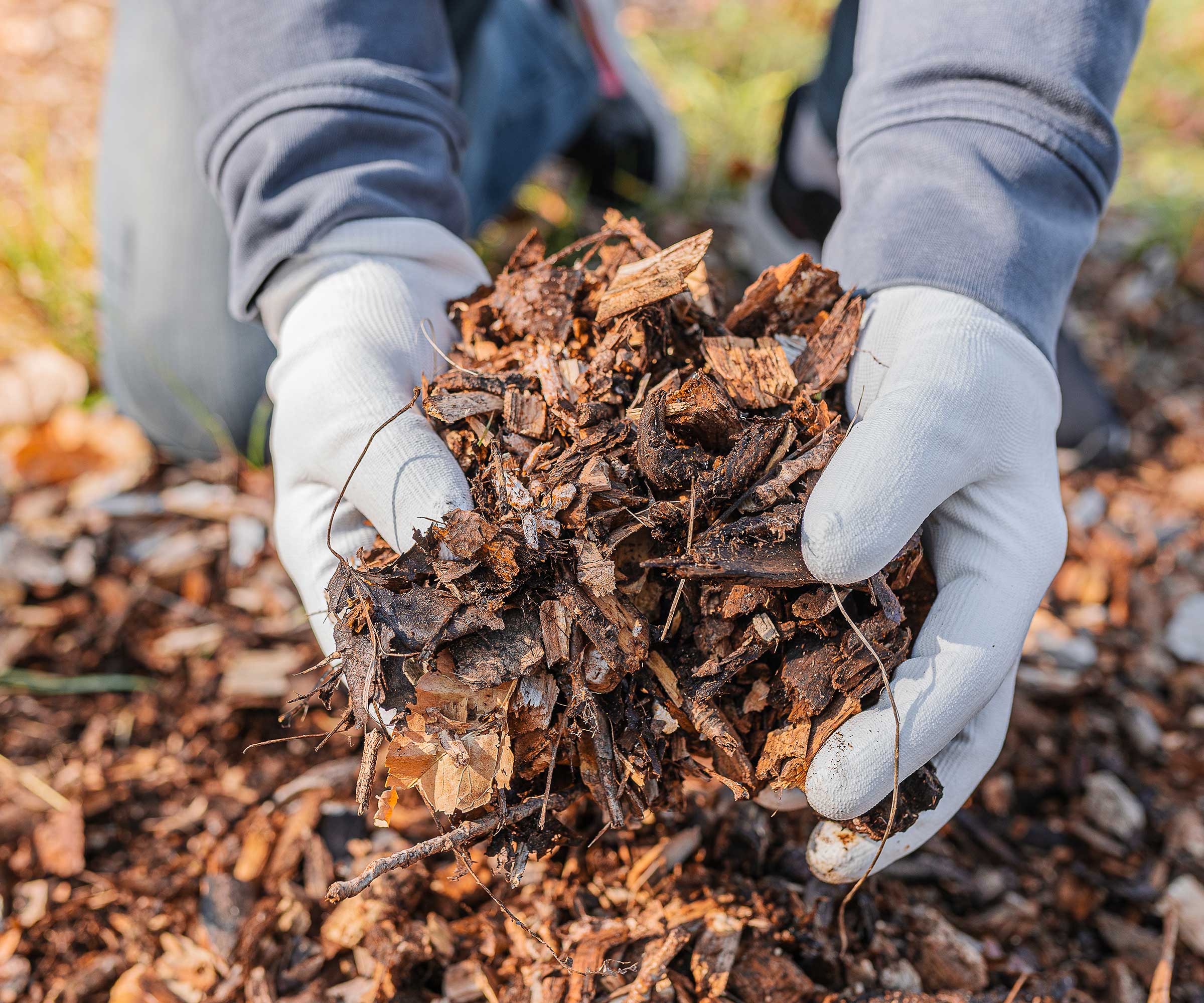
'Apply dry mulch, such as chipped bark or straw around borderline-hardy plants, such as agapanthus, phygelius (cape fuchsia), hedychium and the architectural melianthus to protect the crown,' advises plant expert Sarah Raven.
You could also use leaf mold or piles of leaves to add some extra protection on garden beds and provide a barrier against the cold. This is a great way to make use of fallen leaves.
Find out how to make leaf mulch to protect tender and emerging plants. You can even use things like this orchid potting bark from Amazon as an ingredient for your mulch.
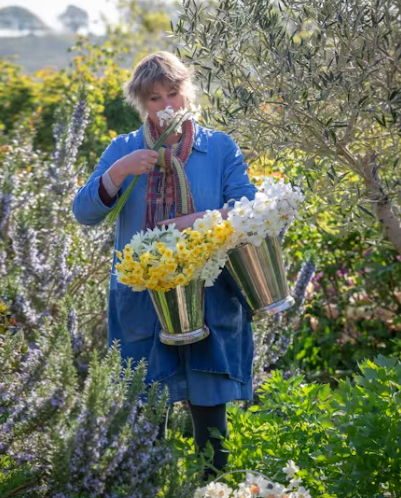
Sarah is an inspirational and passionate teacher, and has been running cooking, flower arranging, growing and gardening courses at Perch Hill, her farm in East Sussex, and around the country, since 1999. Sarah has written for The Saturday Telegraph, Country Living, Gardens Illustrated, Gardeners’ World Magazine, The English Garden and Sainsbury's Magazine among others.
3. Cover plants with fleece
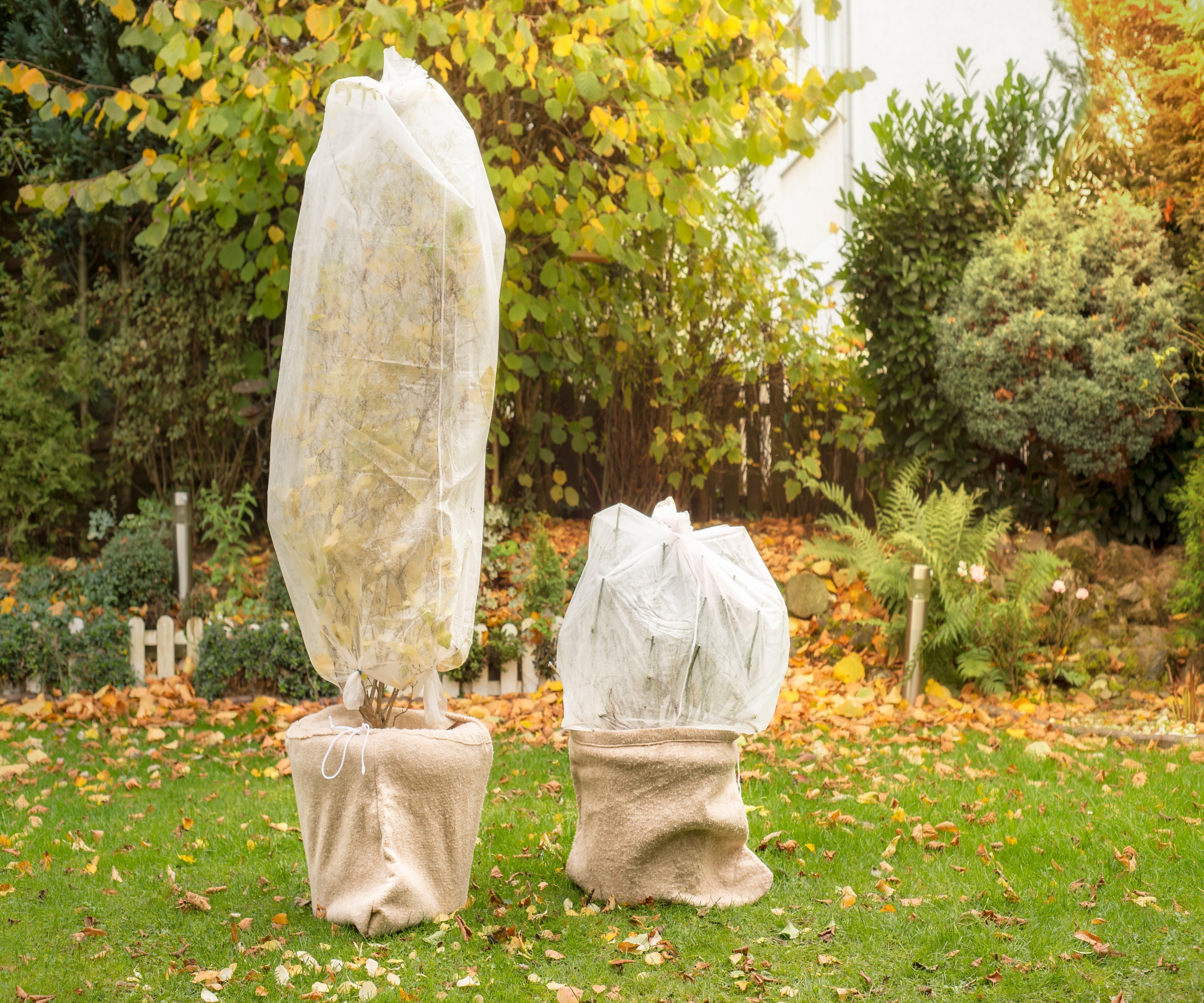
You may wonder how to protect plants from frost when they are planted in the ground or are larger potted plants? One method – which is useful for larger garden plants and shrubs – is to cover them with a frost cloth of horticultural fleece. You could use bed sheets to protect plants from frost, blankets or bubble wrap, too. These Amazon plant covers come highly recommended by reviewers.
Place several stakes around your plants and then cover these with the chosen material to create a tent-like structure. Weigh down the corners to prevent the coverings from blowing away in the night and remove the covers during the day.
You can use this method for plants that require winter protection, such as for winterizing tree ferns, agapanthus, and cordyline.
'Fleece is very effective, but if you prefer something less obtrusive, a circle of wire netting filled with bracken or leaves will keep the cold at bay, too' advises Sarah.
You can also wrap the trunks of young trees with horticultural fleece or blankets, such as if you're growing some of the best fruit trees or have mastered how to grow lemon from seed.
4. Place tender plants in a sheltered spot

The mantra 'right plant, right place' is relevant when considering how to protect plants from frost.
Make sure to plant tender plants in a sheltered position - one that is in a south-facing garden wall or west-facing is even better because the wall will absorb heat in the day and radiate it at night.
Other sheltered positions will include next to fences, under large evergreen trees for gardens, under the protection of pergola ideas or in patio or courtyard areas, as long as these also receive plenty of sunshine. This will eliminate exposure to wind and reduce potential frost damage.
While a sunny, sheltered spot is ideal for many tender plants, do not place early-flowering plants, such as magnolias and camellias, so that they are exposed to the morning sun. A rapid thawing of frozen buds can blacken them and cause them to fall off.
5. Lift and store tender perennials

Tender perennials that have bloomed and died down can be lifted to protect them from frost - this should be a priority when overwintering a garden. Use the same method to lift perennials when you divide plants, using something like this hand trowel from Amazon.
Store the roots, bulbs, tubers and corms in a cool but frost-free place, such as a potting shed or greenhouse. There are lots of mini greenhouses to shop at Amazon, should you only have a few tender perennials to protect.
This is a suitable method for overwintering dahlias or overwintering begonias.
6. Protect tender plants with a cloche
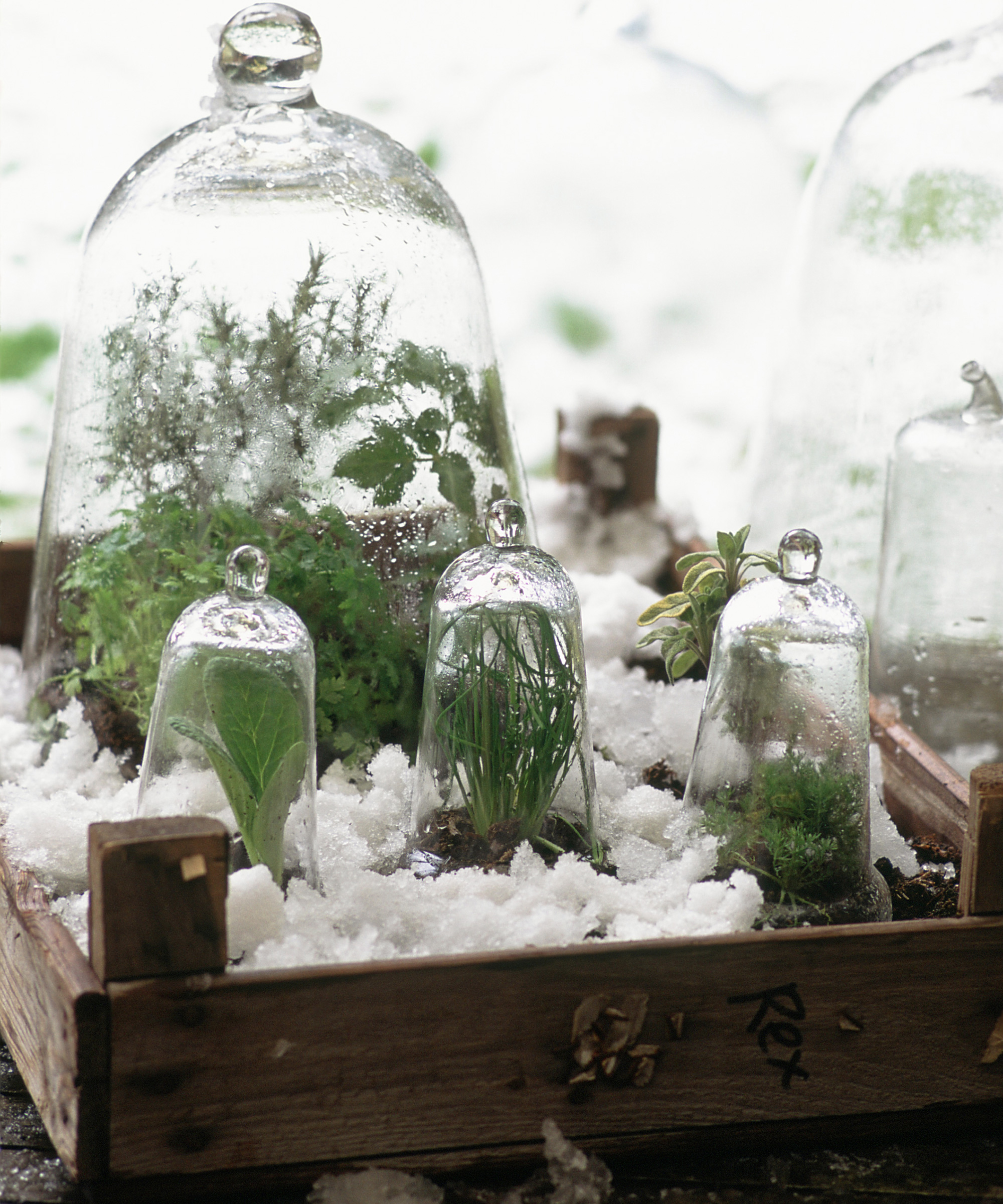
If you're wondering how to protect plants from frost in the vegetable patch, then a cloche is one of the best methods. A cloche can be used to protect seedlings and smaller plants from frost.
Cloches are bell-shaped covers made from glass or plastic that can be placed over the plants. You can buy cloches or even make your own out of recycled objects. They also sell a range of cloches on Amazon.
Alternatively, make your own cloche by cutting off the tops of large plastic bottles or milk containers. This is a good solution for a DIY indoor greenhouse, too.
Remember to remove cloches during the day to allow the plants to benefit from the warmth and energy of the sun.
Cloches are ideal for use with young vegetable crops that are sown in fall, such as fava beans, spinach, scallions or spring onions and asparagus.
7. Move plants into a cold frame
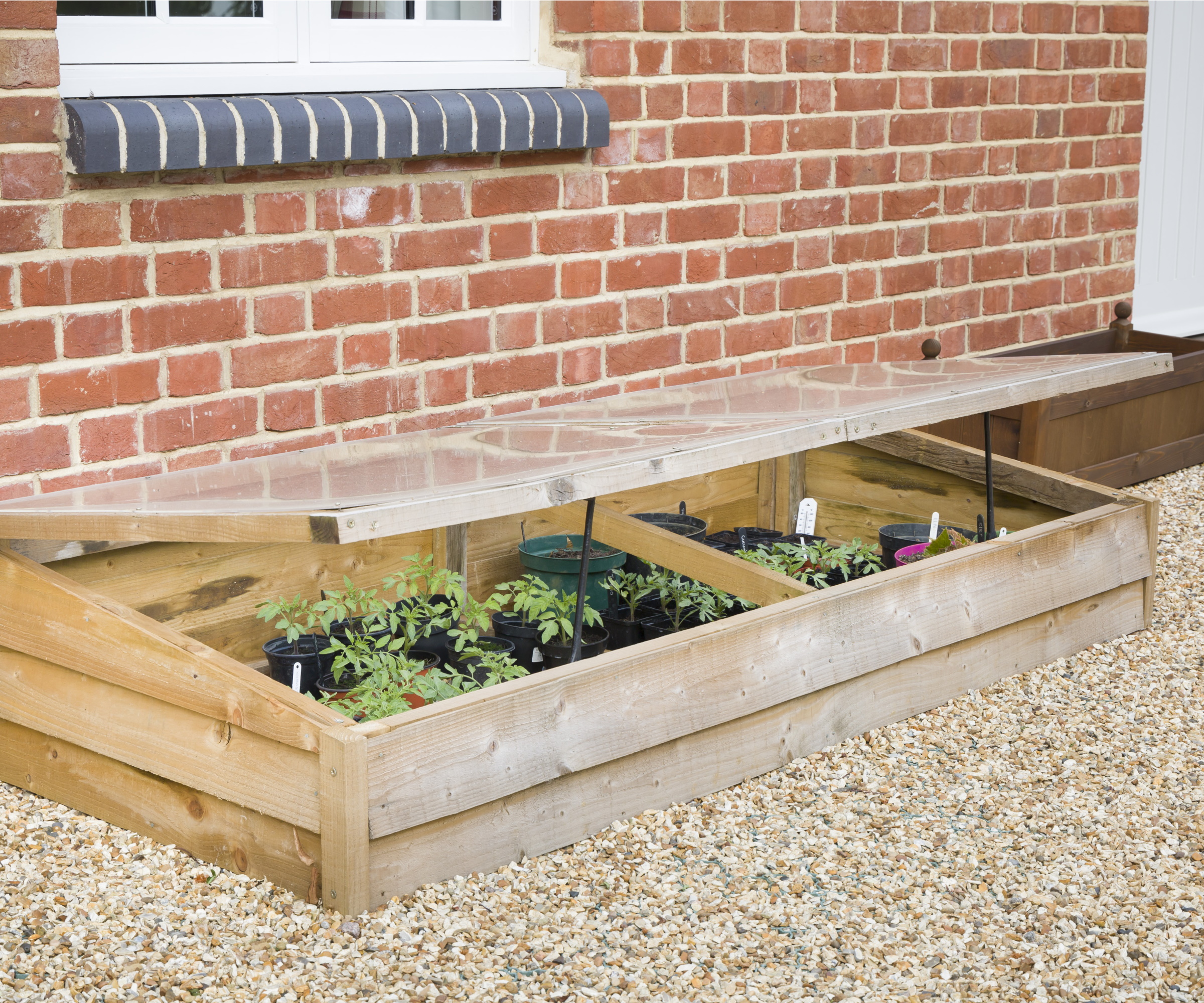
Young hardy annuals that are sown in fall may also benefit from some protection from frost.
Place them in the shelter of a cold frame over winter, although ensure they have good ventilation on warmer days.
You can buy a portable and solid cold frame, such as this Costway Cold Frame available at Walmart. Alternatively, you could make your own cold frame if you don't already have one.
To make your own temporary cold frame:
- Bend slender, metal rods into loops – you could use wire coat hangars for this
- Insert the ends of the metal loops into the ground either side of a row of crops or plants
- Lay a sheet of clear plastic over the frame and secure it in place to protect the plants below
8. Keep seedlings into a greenhouse

As mentioned, once place you can move plants to protect them from harsh weather is a greenhouse. These provide shelter and warmth, so long as you keep it insulated - you can even use a method to heat a greenhouse cheaply.
It is imperative that young plants and seedlings are kept out of the cold during frost, otherwise they are likely to die off. This is a seed sowing mistake that leads to failed seedlings.
'You don’t even need a big one - a simple polycarbonate or DIY plastic-sheet frame can work wonders by trapping enough heat to keep frost at bay,' notes Valeria Nyman.
Use this greenhouse shelf from Amazon to keep your seedlings organizes over winter.
9. Water plants in the morning before frost
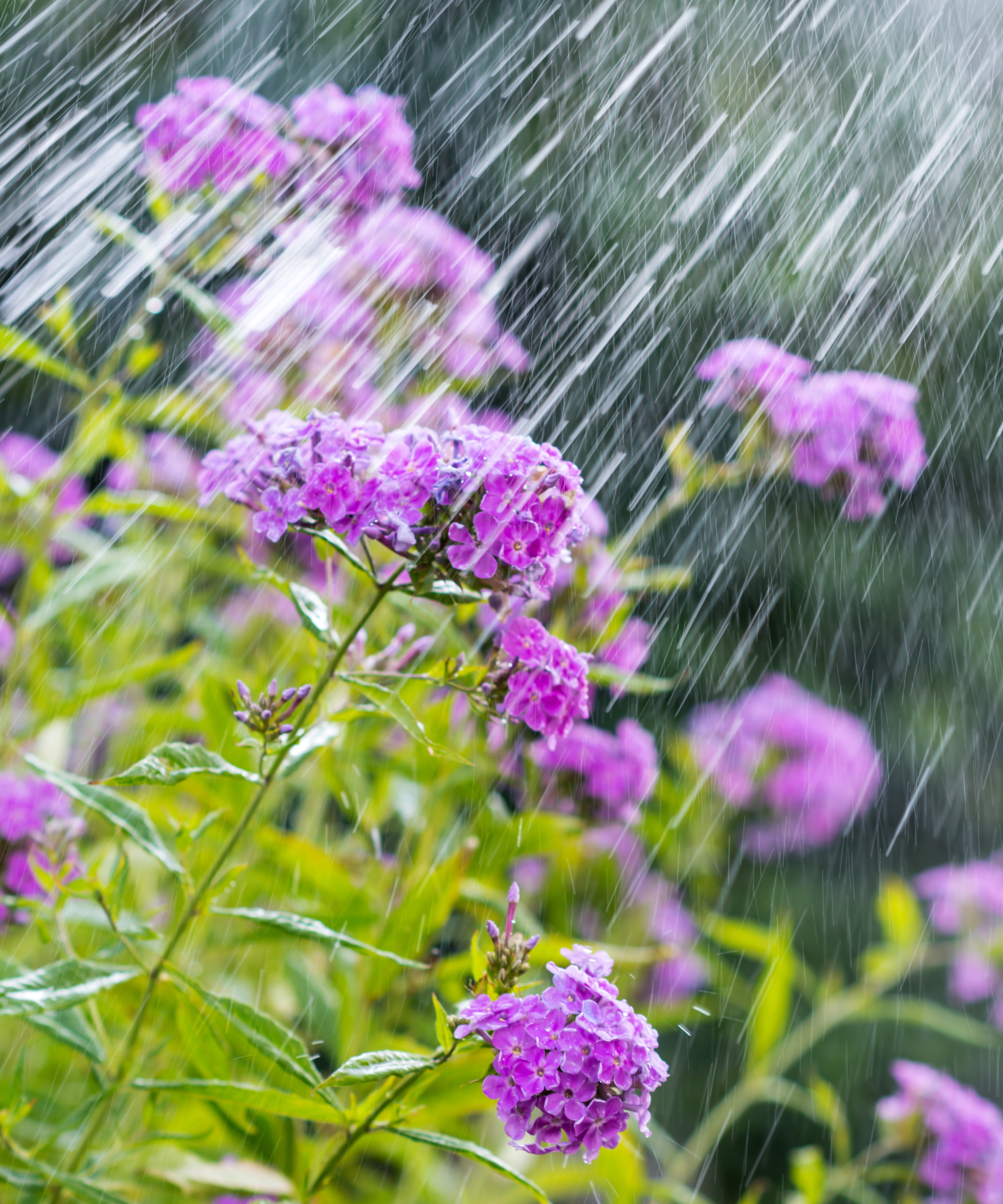
You probably wouldn't think that your routine for watering plants could make a difference when considering how to protect plants from frost – but in fact it can help support any protective measures you take.
'Watering in the morning may sound counterintuitive, but moist soil can hold heat better than dry soil, creating a protective thermal buffer,' says Valeria.
It is best to water plants in the morning during winter and when there is a risk of frost, because wet soil actually absorbs heat during the day and has an insulating effect.
'Conversely, watering at night can freeze around roots, making things worse. This small shift in timing could prevent countless frostbitten mornings,' Valeria adds.
Once you have finished watering your plants, don't forget to protect your outside faucet from freezing in winter. Try using this outdoor faucet cover from Amazon.
10. Reduce your watering schedule
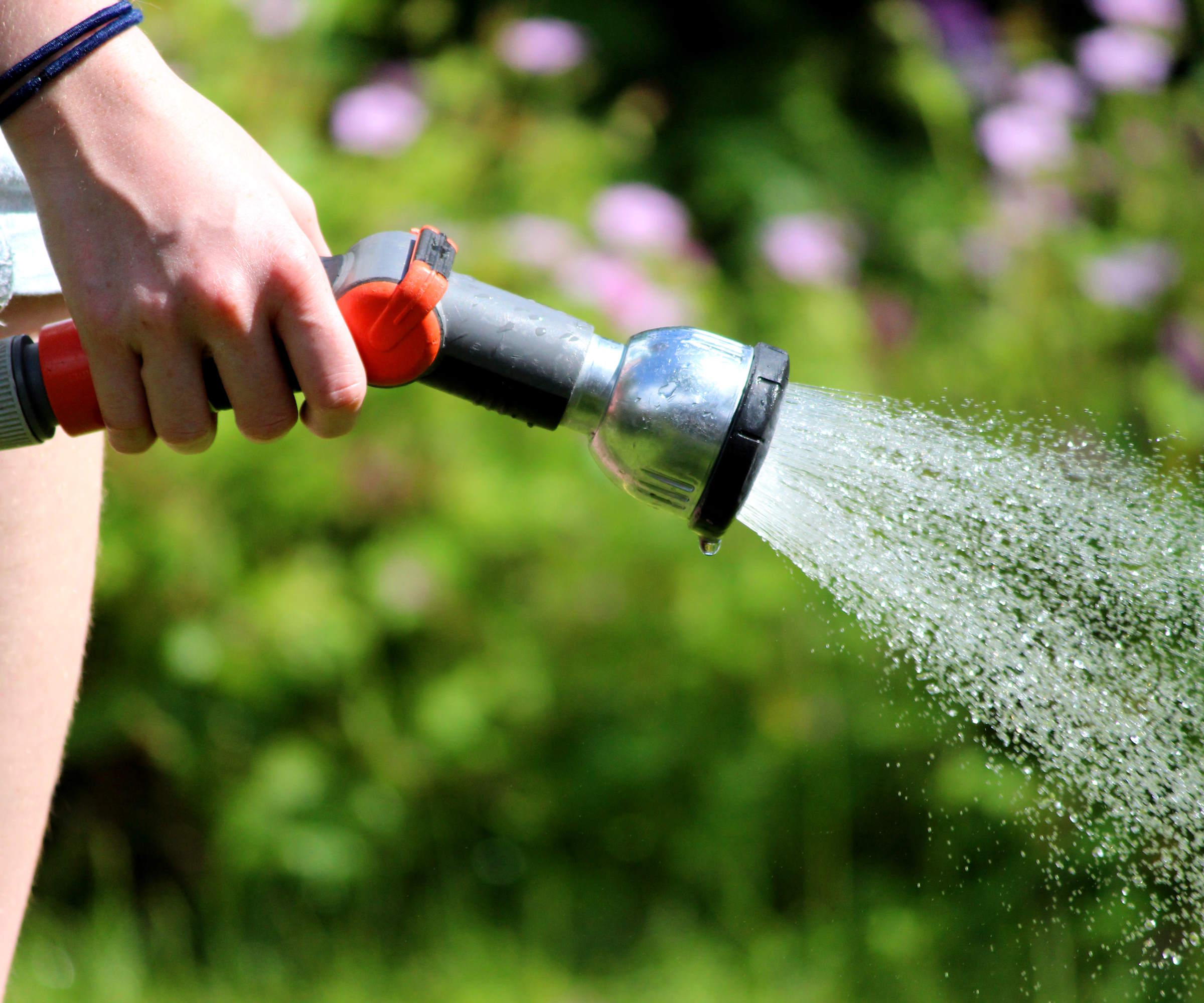
While it's true you should water your plants before frost, you also need to reduce watering overall once frost arrives.
This is because plants aren't actively growing during the coldest season and absorb less water. By continuing to water them as frequently as you do in summer, you produce excess water that will freeze in frost and damage plant roots.
Avoid this gardening watering mistake by using a soil moisture meter (from Amazon) to test if your plants have sufficient water levels.
11. Wrap containers
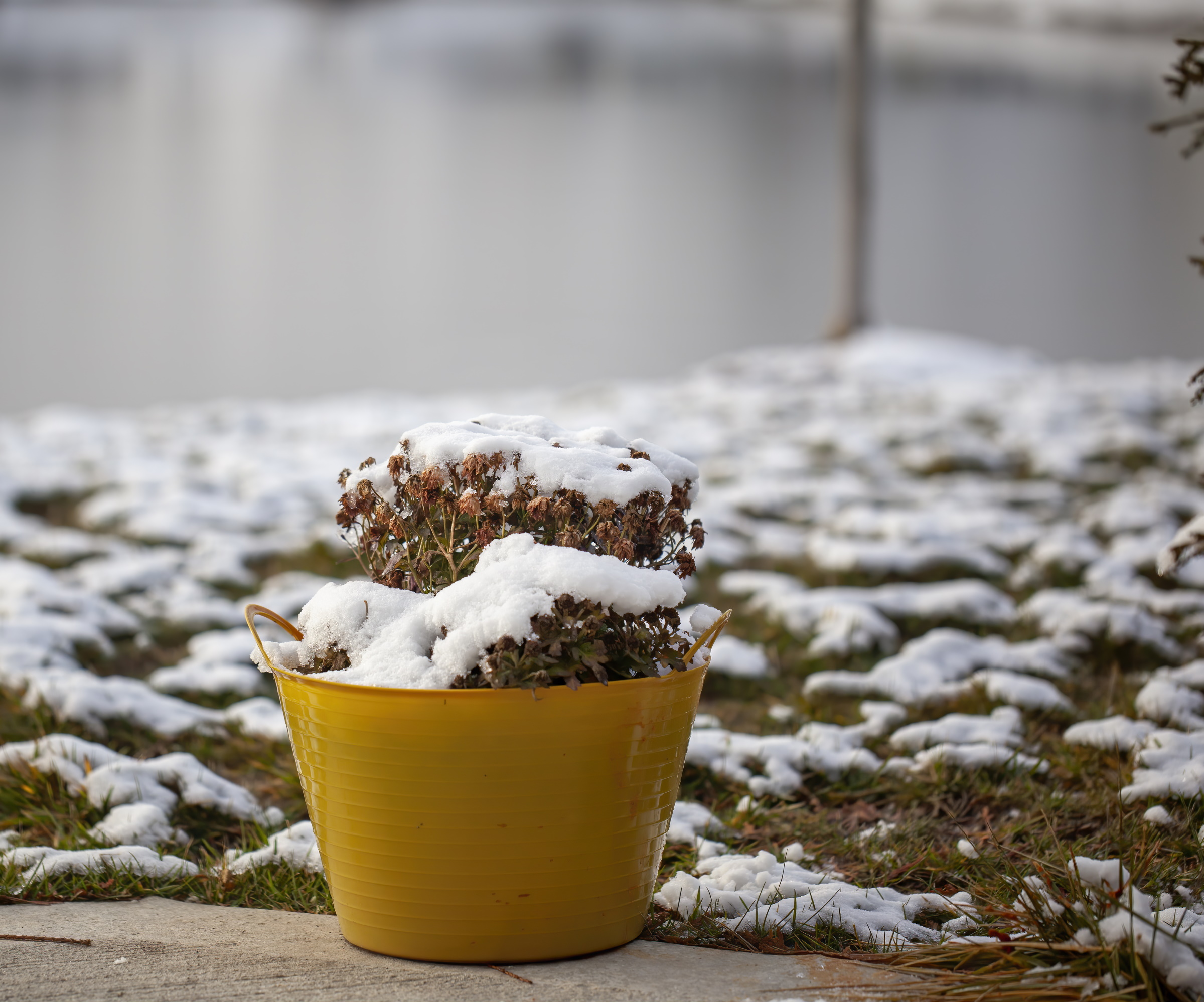
If you are unable to move containers indoors as a method for how to protect plants from frost, then try to protect them from the elements outdoors wrapping them.
Container plants are more likely to suffer from their roots freezing. To prevent this, wrap the containers with bubble wrap from Amazon or burlap from Amazon. Alternatively, you can bury the pots in the ground. Whichever of these methods you choose, it will provide insulation for the roots.
It's can also be a good idea to use pot feet (available at Walmart) or bricks as something to put at the bottom of a container for drainage. This raises containers, allowing excess water to drain away more easily and stop plants sitting in icy water.
12. Choose the right plants for your backyard

Rather than trying to protect plants that are not suited to the climate of your backyard, instead choose those that are reliably hardy in the zone where you live. This will prevent the disappointment of losing plants when they aren't adequately protected.
Many evergreen shrubs and plants are fairly hardy. Plants will have a hardiness rating ranging from fully hardy – able to withstand temperatures of 0-10°F – to frost tender, which might not survive being exposed to temperatures below 40-50°F.
While this might limit to some extent the plants or crops you can include in your garden, there will still be plenty of options suitable to your US hardiness zone.
You can also include some of the best winter flowers to plant for color and interest in the colder months, or best winter plants for pots and borders.
FAQs
At what temperature should I cover my plants for frost?
The temperature at which you should cover your plants from frost to protect them will depend on the individual plants and the conditions and position in which they are planted. Frost occurs in temperatures below 32°F so this is the point at which you need to be protecting plants in winter. Most plants will need protecting from temperatures of 30°F or lower, but frost tender specimens should be protected before temperatures dip this low.
Can I use plastic bags to cover plants from frost?
It is not advisable to use plastic bags to cover plants from frost. This is because plastic can damage your plants if it makes contact with foliage, as it holds water against the plant and causes more damage from freezing. It also isn't a very insulating material, nor is it an eco-friendly or a sustainable option, so look for alternatives when deciding how to protect plants from frost.
Taking measures to protect plants from frost and snow should definitely near the top of your winter gardening checklist. Being proactive can make all the difference to ensuring all of your plants come through winter unscathed.
For more winter garden inspiration, or if you are wondering: should you remove snow from plants, our guide has all the information you need to know to keep you plants safe in winter.
Rachel is senior content editor, and writes gardening content for homesandgardens.com, Homes & Gardens magazine, and its sister titles Period Living Magazine and Country Homes & Interiors. She has written for lifestyle magazines for many years, with a particular focus on gardening, historic houses and arts and crafts, but started out her journalism career in BBC radio, where she enjoyed reporting on and writing programme scripts for all manner of stories. Rachel then moved into regional lifestyle magazines, where the topics she wrote about, and people she interviewed, were as varied and eclectic as they were on radio. Always harboring a passion for homes and gardens, she jumped at the opportunity to work on The English Home and The English Garden magazines for a number of years, before joining the Period Living team.
- Tenielle JordisonGardens Content Editor
